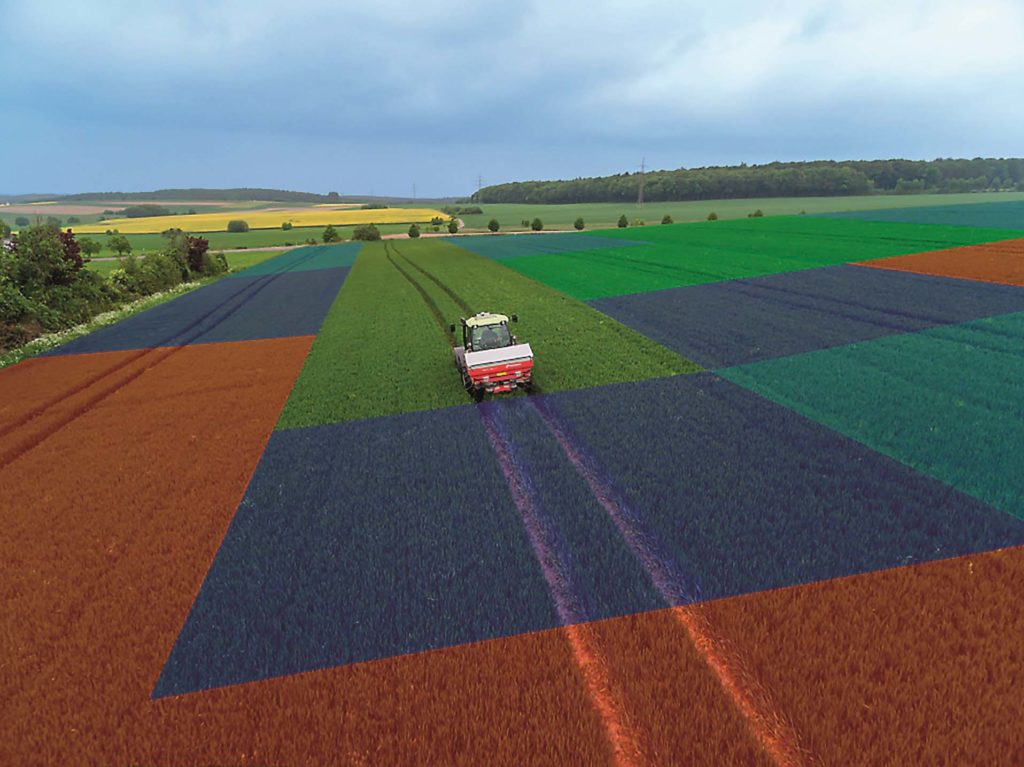
The greenhouse gases emitted during cultivation can be grouped into fertilizers, in particular nitrogen. The variable rate, here in the representation proposed by Kverneland, offers the opportunity to improve the efficiency of the distributed fertilizer, significantly reducing emissions (Fonte: Kverneland).
Mechanization can make a significant contribution to improve the sustainability of arable crops if we dare to make innovative choices.
by Lorenzo Benvenuti
The word sustainability is today one of the pillars of marketing actions. Now there is no merchandise on the market that does not invite the consumer to appreciate their sustainability. All of this sounds very positive, yet the state of the planet does not seem to be improving. Not at all. So, let’s try to be clear about this term by developing some specific considerations in our sector. Sustainability should be a broad and univocal concept. In actual fact, this term is attributed after having conducted (if conducted!) only partial or sectorial analyses such as those on greenhouse gas emissions or on residues of non-biodegradable molecules or on contamination with substances with eutrophic effects in water or on the variation in soil organic matter content or on biodiversity, or more. For example, if a farmer does not use synthetic pesticides his process is considered sustainable by many. But is it really so? Can we really limit ourselves to this aspect, albeit important, to judge a production process? Is this the model of cultivation that we want to reward and spread? Or maybe a cultivation based on integrated control, which through precision agriculture reduces the use of all inputs (copper included), which does not resort to plowing and continuously performs cover crops can be considered more sustainable? The analysis concerning sustainability are by their very nature very complex because they must cover all the aspects that involve the natural environment. However, this is not yet sufficient. In its definition, in fact, are also included social aspects, linked to the community directly involved in the production process and to the consumer community, and economic aspects that depend on the financial performance. In fact, we need to underline that only an adequate remuneration can guarantee the repetition of the production process, if it is at a loss it will be abandoned, regardless of its environmental “value”. Therefore, also social and economic issues provide fundamental pieces of the complex mosaic of sustainability.
Productivity and sustainability
Sustainability analysis must widen the horizons and take into consideration what happens outside the “field” under study in relation to the results of the production process carried out on the “field” itself.
It is therefore necessary to extend the investigation as far as the consequences of our technical choices, carried out within the productive cycle applied to the “field” under examination, are not exhausted. Let’s try and figure out with an example. Suppose a farmer introduces virtuous practices in his production process that allow him to “satisfy” several aspects of sustainability, but that causes a reduction in productivity.
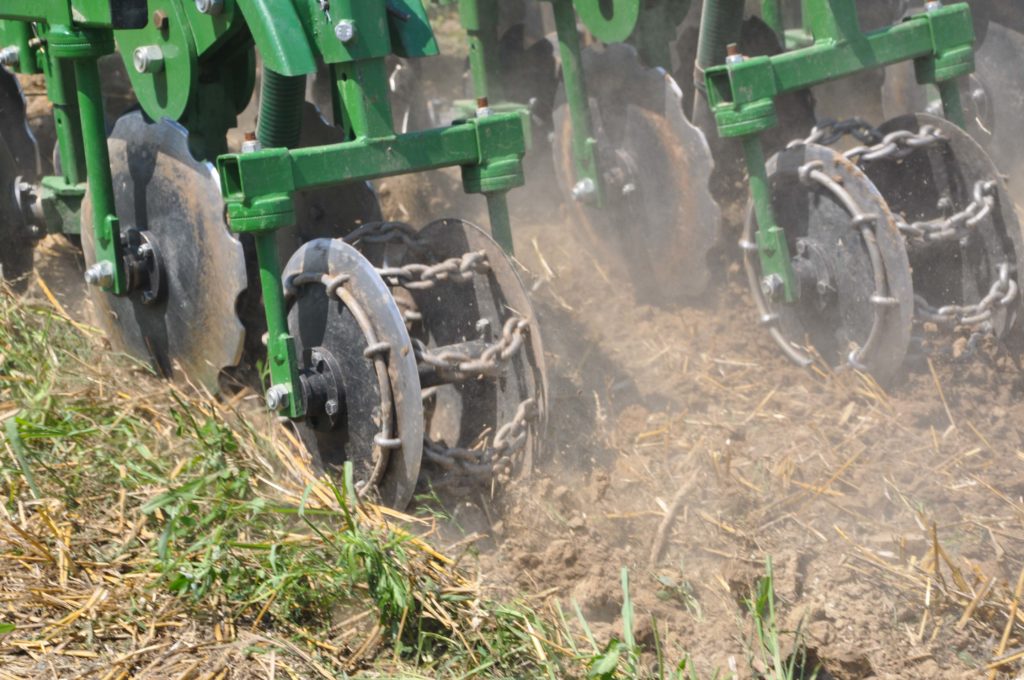
All the different conservative soil management techniques make an important contribution to improving sustainability; in fact, not only do they lead to a net reduction in energy consumption and machine consumption but, by acting positively on the soil organic matter, they increase the carbon sink.
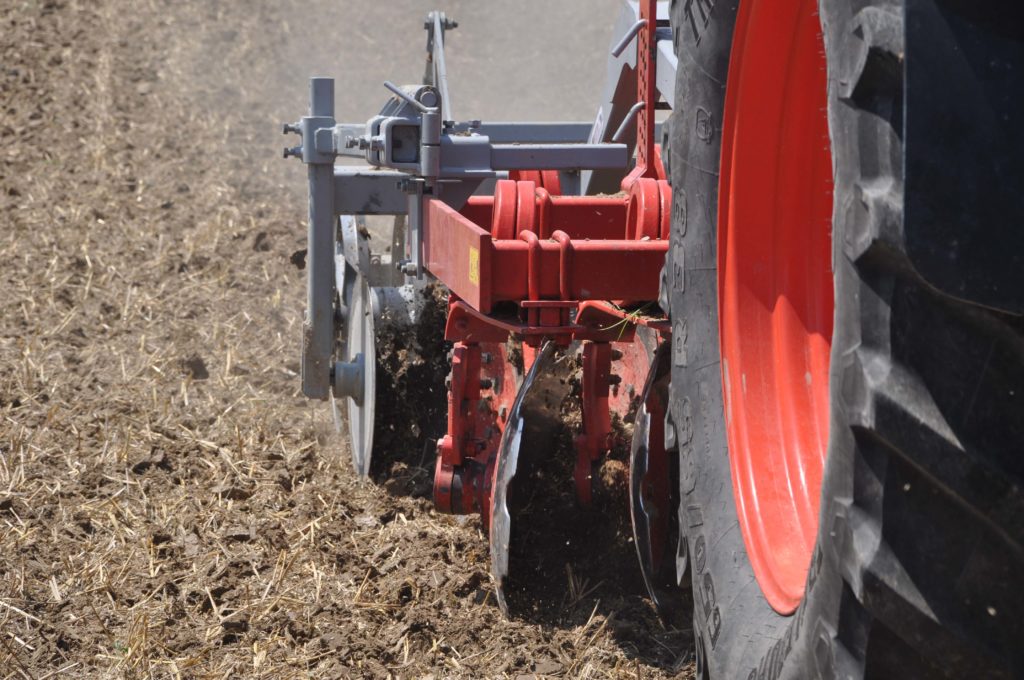
In conservative processes the tools equipped with discs are preferred. Among these, those mounted independently on the frame offer greater flexibility of use and a tendentially better effect on the management of the crop residue.
A superficial analysis of sustainability will certainly reward the company of this farmer and it is possible that, by virtue of this recognition, he will get an increase in sales prices such as to allow him to keep his remuneration within the expected level or even to exceed it. If we expand the analysis to the world level we will be able, however, to discover that the lower production of this company (and of all those that adopt such a productive model) is compensated, in other parts of the world, through a greater production or expanding the cultivated lands.
[su_box title=”Other aspects of sustainability” box_color=”#43634b”]A mechanization designed for the crops and the environment in which it is practiced is able to provide other contributions to sustainability. As mentioned above, the adoption of conservative practices increases, over the medium term, organic matter content of the soil. This parameter can be associated with indicators of biodiversity and living biomass. In fact, the lower oxygenation of the soil, the different management of the crop residue, the implementation of cover crop, lead to an increase in living biomass and to an increase in the vitality of the soil food web, that is to say of the soil food web that depends on the organic matter. A biologically active cultivation environment offers greater resilience, namely the ability to withstand unplanned changes deriving from weather events and gradation of pests and pathogens. The path is not short, but the aim is important and able to reward the efforts of the farmers who are pursuing it. [/su_box]
In both situations it is possible to record (and in fact they are continuously recorded) situations in which the “sustainability” losses generated are much higher than the advantage provided by the company “rewarded” for its sustainability.
An example can be found in the sector of oils and vegetable proteins, products supplied by crops suitable for tropical environments: a reduction in European productions pushes towards the destruction of equatorial forests to make room for new lands on which to breed these crops. Another concept that we can therefore highlight is that an agricultural production process cannot be considered sustainable if it reduces the potential productivity of the plots on which it is carried out.
As a result, every activity aimed at enhancing, in production terms, the resources employed is to be considered (potentially) a contribution to sustainability. Precision agriculture and genetic improvement of cultivated plants are strong (and not the only ones) elements of the path towards improving sustainability.
Emissions of climate-changing substances
In arable crops the operations that have the greatest impact are the distribution of fertilizers, followed by the processing and sowing of the land and the collection and transport of the product. A fertilizer with 250 kg/ha of urea emits, on average, according to literature data, about 720 kg of CO2/ha. Of these about 4 kg of CO2/ha are attributable to the “machine” and the rest to the distributed product. The distribution of nitrogen fertilizers also favors nitrous oxide emissions, a greenhouse gas about 300 times more effective than CO2in reflecting thermal waves.
Emissions of nitrous oxide, expressed as CO2 equivalent, can reach 500 kg CO2eq/ha. In this specific analysis a clear disproportion between the machine and the distributed product emerges. Conventional soil working based on deep plowing (including sowing) produces emissions between 110 and 150 kg of CO2/ha. While the harvest of grains with transport of the product at a short distance produces between 80 and 100 kg of CO2/ha. It is clear that the contribution of emissions deriving from the use of machines is lower than that of fertilization with urea of maize. In fact, approximately the emissions of climate-changing gases deriving from the use of the machines represent around 15% of the total emissions for a high-input arable land such as maize and 35% for low-input crops such as soy.
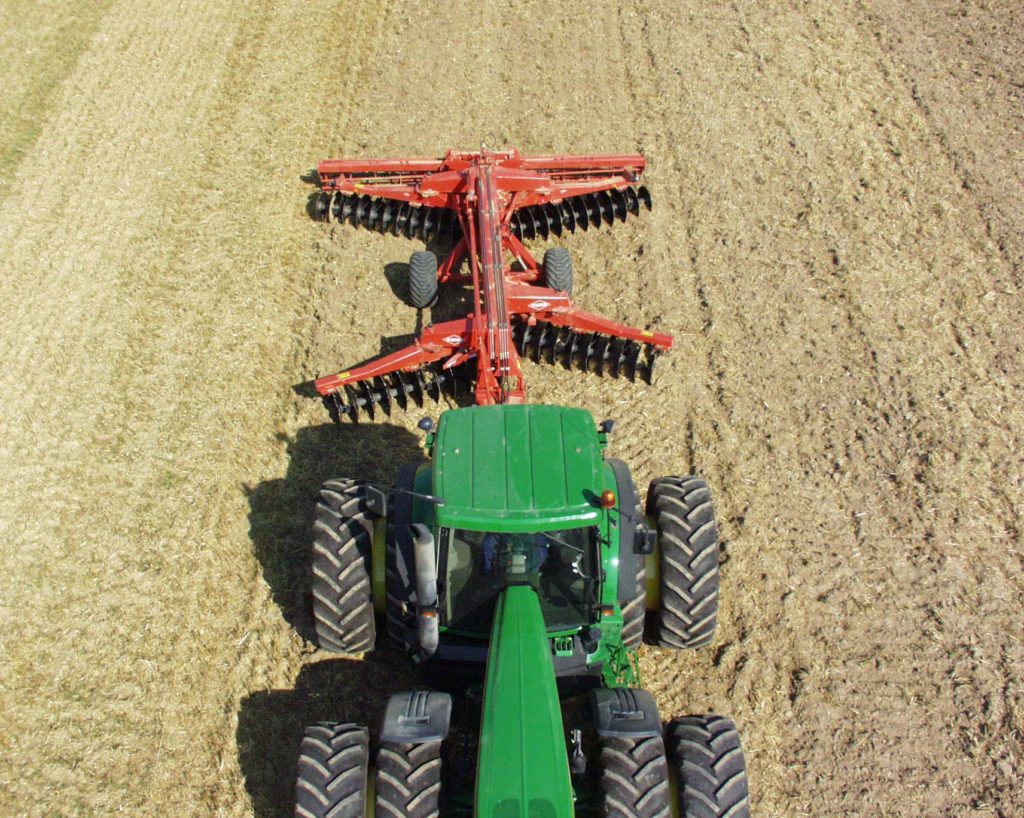
Regardless of the reference model, avoiding trampling effects on the soil is a necessary step if we want to improve the sustainability of the agriculture production process (Fonte: KUHN).
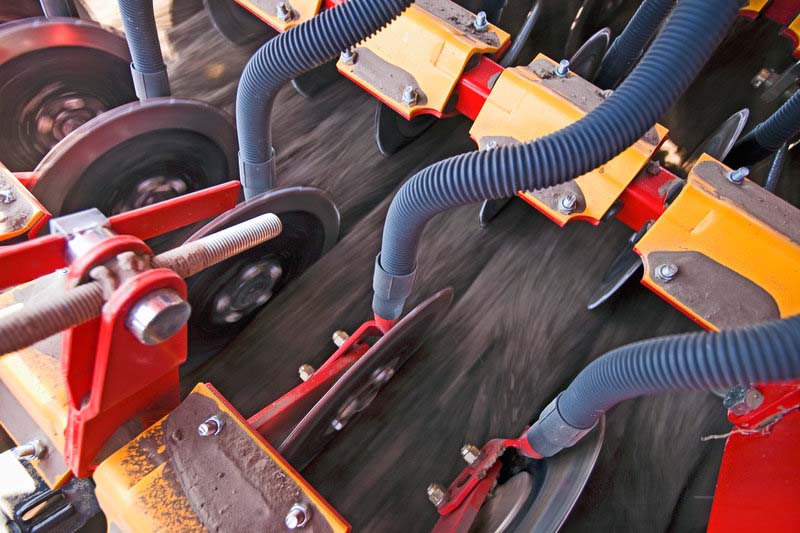
Timeliness of execution, which can ensure greater speed in intervention, is one of the prerogatives of conservation tillage.
Contributions from mechanization
From these data it would appear that, in order to reduce emissions of climate-changing gases, it is not convenient to act on mechanization. On the contrary this is a very powerful means that allows these emissions to be significantly reduced. There are two strategies available: both technically feasible, both with positive effects on production costs and income, applicable together and able to generate positive synergies. The first strategy concerns the implementation of conservative processes.
These act on the reduction of greenhouse gas in two ways: drastically reducing the use of machines and diesel consumption (the reduction in emissions due to processing and sowing is between 60 and 75%); favoring the increase of organic matter in the soil. The soil is one of the so called “carbon sinks”, namely wells where atmospheric carbon can be fixed.
To understand the importance of carbon sink in the soil, consider that an increase of 0,1% of organic matter in the first 15 cm of soil involves the fixation of about 4 t of CO2/ha. With the abandonment of the plowing and the application of a reduced and conservative process, we can expect (indicatively) to increase the organic matter by two/three tenths of a percentage point every five years (of course up to a threshold that then will remain constant, depending on the localization of the land and on other management methods).
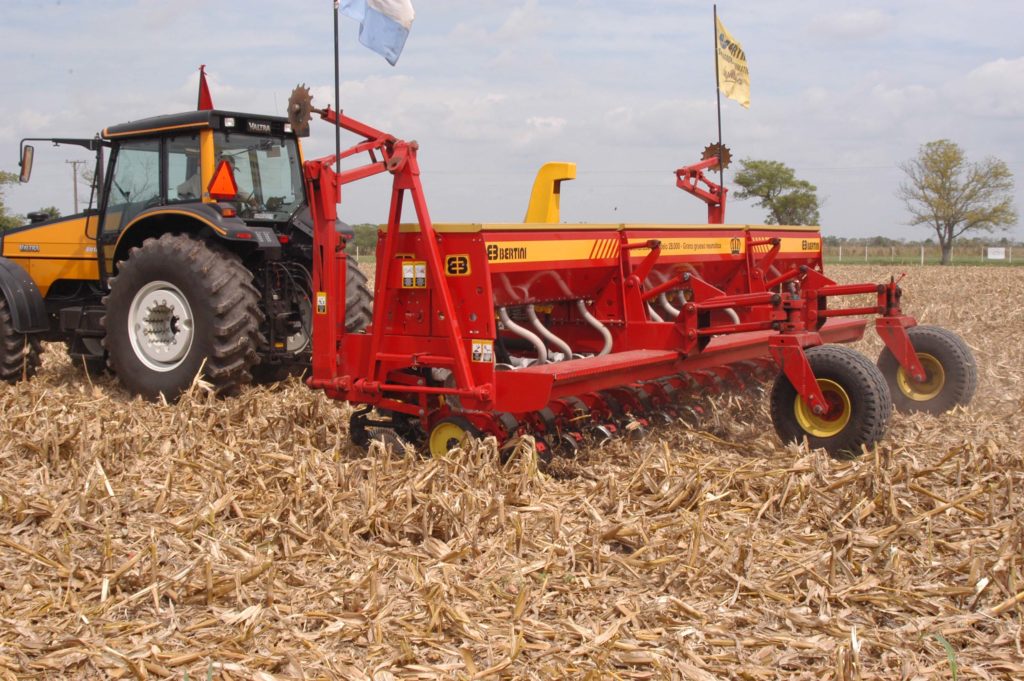
Direct sowing is the technique that best represents the purposes of conservation agriculture.
In our country it fails to establish itself in spring crops, while it is more widely used in second harvests and in autumn sowing crops.
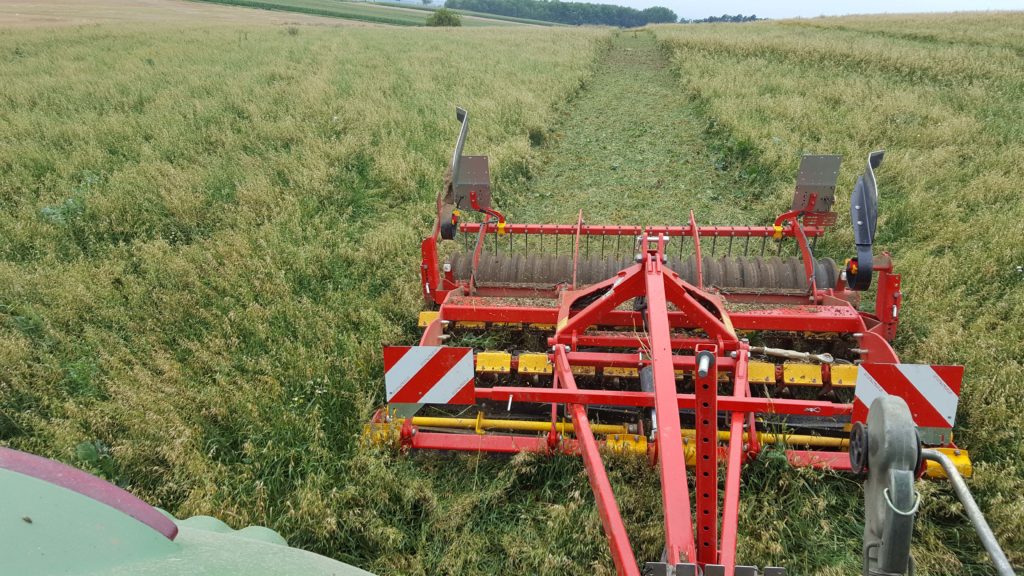
The cover crops improve sustainability thanks to the contribution of organic matter, the action of capture of the assimilable nitrogen, to the control of weeds.
The second strategy concerns the implementation of precision agriculture. In particular, the automatic guidance (adopted for all operations) and the variable rate, applied at least to the distribution of fertilizers, offer the concrete possibility of reducing emissions to a significant extent. With the automatic guidance the diesel consumption is reduced avoiding overlaps in the passes (for example in tillage and in particular in conservative tillage carried out at high speed) and the double distributions occurring in sowing, fertilization and weeding are reduced. In this case, product savings and respect of set dose is pursued. As for fertilizers (in particular nitrogenous ones), given their strong impact on climate-changing gas emissions, product savings lead directly to lower emissions.
A second important step concerns the adoption of the variable rate that allows the dosing of the fertilizer (or of herbicide) according to the potential (or need) of every single area of the plot. As everybody knows, the variable rate is based on prescription maps created following the production map obtained in the collection phase in previous years (history) and other types of analysis (for example of soil, vigor, etc.).
With the variable rate the efficiency of the distributed products is improved (and this can generate a greater production and less groundwater contamination) and the dispersion in the environment is reduced (with less problems of surface water contamination). } © All Rights Reserved



